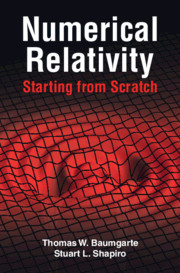Refine listing
Actions for selected content:
17000 results
4 - Dust
-
- Book:
- Introduction to the Interstellar Medium
- Published online:
- 28 January 2021
- Print publication:
- 18 February 2021, pp 26-42
-
- Chapter
- Export citation
11 - The ISM in Other Galaxies and Beyond
-
- Book:
- Introduction to the Interstellar Medium
- Published online:
- 28 January 2021
- Print publication:
- 18 February 2021, pp 177-194
-
- Chapter
- Export citation
Contents
-
- Book:
- Introduction to the Interstellar Medium
- Published online:
- 28 January 2021
- Print publication:
- 18 February 2021, pp v-viii
-
- Chapter
- Export citation
Frontmatter
-
- Book:
- Introduction to the Interstellar Medium
- Published online:
- 28 January 2021
- Print publication:
- 18 February 2021, pp i-iv
-
- Chapter
- Export citation
5 - Atomic Regions
-
- Book:
- Introduction to the Interstellar Medium
- Published online:
- 28 January 2021
- Print publication:
- 18 February 2021, pp 43-61
-
- Chapter
- Export citation
2 - Observations
-
- Book:
- Introduction to the Interstellar Medium
- Published online:
- 28 January 2021
- Print publication:
- 18 February 2021, pp 7-14
-
- Chapter
- Export citation
Preface
-
- Book:
- Introduction to the Interstellar Medium
- Published online:
- 28 January 2021
- Print publication:
- 18 February 2021, pp ix-x
-
- Chapter
- Export citation
Appendix - Constants in SI and cgs Units
-
- Book:
- Introduction to the Interstellar Medium
- Published online:
- 28 January 2021
- Print publication:
- 18 February 2021, pp 195-196
-
- Chapter
- Export citation
3 - Essential Background Physics
-
- Book:
- Introduction to the Interstellar Medium
- Published online:
- 28 January 2021
- Print publication:
- 18 February 2021, pp 15-25
-
- Chapter
- Export citation
References
-
- Book:
- Introduction to the Interstellar Medium
- Published online:
- 28 January 2021
- Print publication:
- 18 February 2021, pp 203-206
-
- Chapter
- Export citation
8 - Dynamics
-
- Book:
- Introduction to the Interstellar Medium
- Published online:
- 28 January 2021
- Print publication:
- 18 February 2021, pp 111-134
-
- Chapter
- Export citation
9 - Star Formation
-
- Book:
- Introduction to the Interstellar Medium
- Published online:
- 28 January 2021
- Print publication:
- 18 February 2021, pp 135-162
-
- Chapter
- Export citation
Glossary
-
- Book:
- Introduction to the Interstellar Medium
- Published online:
- 28 January 2021
- Print publication:
- 18 February 2021, pp 197-202
-
- Chapter
- Export citation
6 - Ionized Regions
-
- Book:
- Introduction to the Interstellar Medium
- Published online:
- 28 January 2021
- Print publication:
- 18 February 2021, pp 62-87
-
- Chapter
- Export citation
1 - Introduction
-
- Book:
- Introduction to the Interstellar Medium
- Published online:
- 28 January 2021
- Print publication:
- 18 February 2021, pp 1-6
-
- Chapter
- Export citation
Index
-
- Book:
- Introduction to the Interstellar Medium
- Published online:
- 28 January 2021
- Print publication:
- 18 February 2021, pp 207-210
-
- Chapter
- Export citation

Numerical Relativity: Starting from Scratch
-
- Published online:
- 12 February 2021
- Print publication:
- 08 April 2021
Preface
-
- Book:
- Cosmic Messengers
- Published online:
- 21 January 2021
- Print publication:
- 11 February 2021, pp vii-xiv
-
- Chapter
- Export citation
Contents
-
- Book:
- Cosmic Messengers
- Published online:
- 21 January 2021
- Print publication:
- 11 February 2021, pp v-vi
-
- Chapter
- Export citation
Part I - Instruments, Messengers, and Cosmic Messages
-
- Book:
- Cosmic Messengers
- Published online:
- 21 January 2021
- Print publication:
- 11 February 2021, pp 1-2
-
- Chapter
- Export citation
